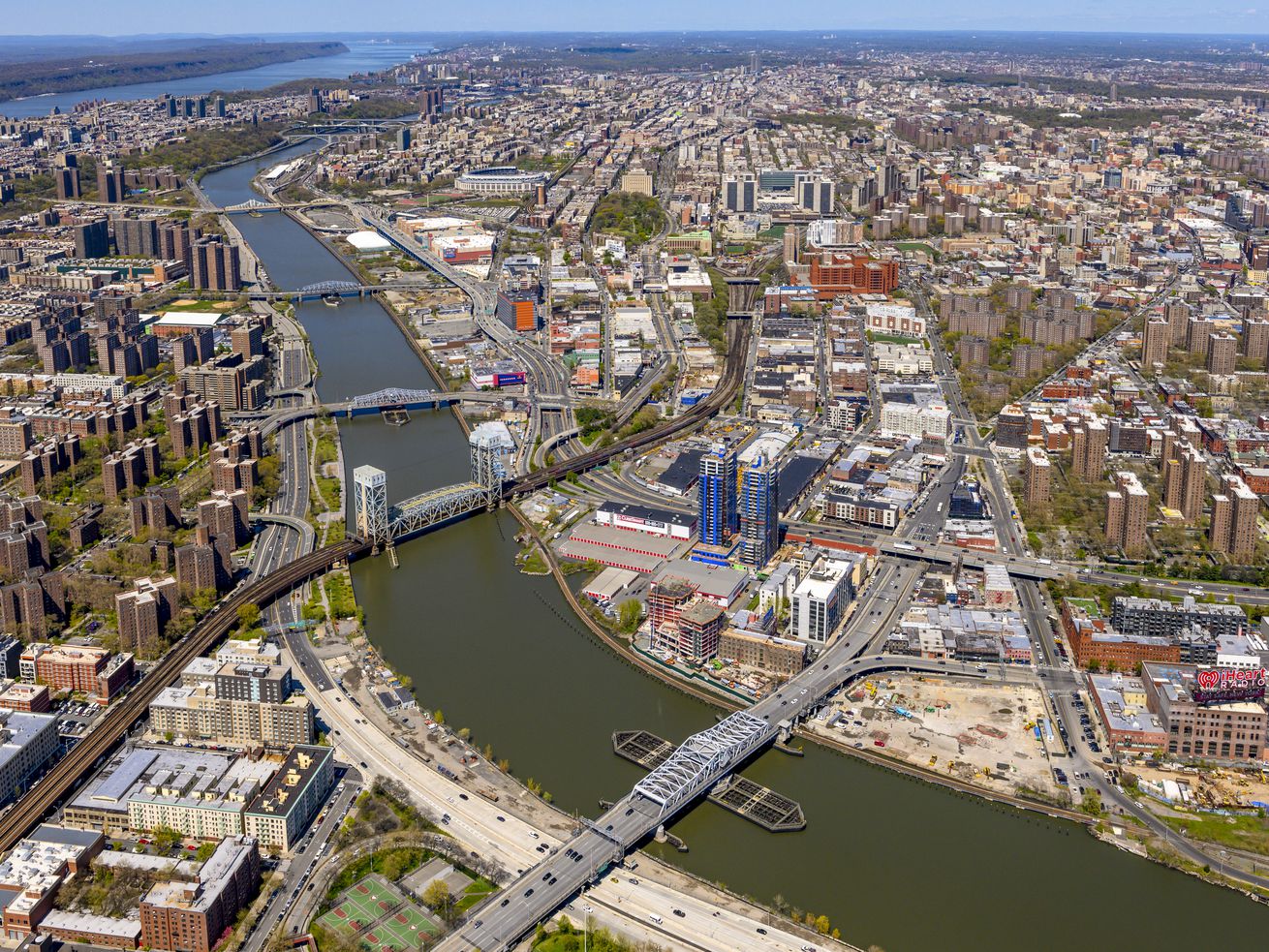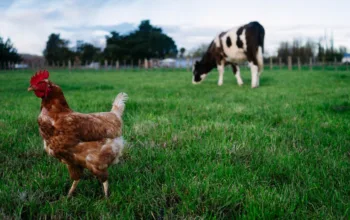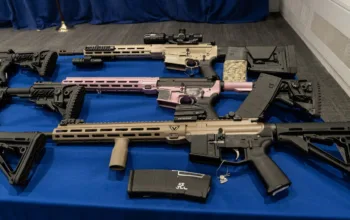In the face of environmental racism, sustainability isn’t about what you buy.
When I was a kid, I thought that turning off the water when I brushed my teeth would save the world. Growing up in the Bronx in the late ’90s, I learned about the environment but my education was, for lack of a better word, a little basic. I was taught in school that we should recycle, that the green bin is for paper and the blue one is for plastic, glass, and aluminum. I didn’t think much about sustainability, but I was happy to do my part. Separating the trash and keeping an eye on the tap made me feel accomplished.
As I grew older and learned that the issues were more complicated than that, I felt ashamed. There were more “rules” than I thought, and it seemed like everything I had been doing was wasteful. I grew up with a large box of straws in the back of my kitchen cupboard, which I later learned could harm sea turtles.
The juice pouches I was fond of during lunch were actually not recyclable, nor were the plastic bags we received at the grocery store. (Those have to be dropped off back at the store and can’t be put in your curbside bin.) And all the times we had a special pizza night? Turns out the pizza boxes soaked in grease can’t be recycled, either. There was just so much more I didn’t know: the caps on water bottles, plastic utensils, bubble wrap, packing peanuts — all things that could not be recycled or had very specific rules on how to do so.
Fast-forward to adulthood: Now a trip to the store makes me anxious, as I continue to search for products in my budget that have less waste and contain natural ingredients. I pick up one item to be met with a laundry list of unintelligible words on the back, and another to learn that the company tests on animals (which leads me to realize, upon further research, that cruelty-free and vegan are not synonymous).
After finally finding one that meets my criteria, I see the packaging is made of thick plastic, something I can’t imagine is recyclable. I pick up another product to find it meets all the standards but is extremely overpriced, and I know there’s no way a moisturizer should cost that much. I start to sweat as I notice that I’ve been in the skin care aisle for more than 20 minutes, with my husband jokingly texting me from the car asking me if I’m still alive.
In reality, my empathy began to feel stressful. But the problem wasn’t me. Having a conversation about sustainability is so nuanced for these exact reasons: How are we expected to do the best for both ourselves and the environment when we are facing unforeseen factors that don’t allow us to?
In the current conversation about sustainability, the focus has fallen on our personal responsibility to help the environment. This could look like anything from buying the right products to recycling, reusing, and reducing. But for neighborhoods where recycling centers aren’t accessible and “sustainable” products are uncommon, the overarching idea of the sustainability movement changes drastically. As I delved into what sustainability looked like in neighborhoods similar to my hometown, I found that a different and urgent story began to unfold.
Let’s talk a little about recycling: How do different communities across America handle this? It’s been shown that different communities have different recycling habits. For example, suburban communities reportedly recycle at much higher rates than urban communities. On the other hand, rural communities are more likely to say they don’t recycle at all. The biggest hurdle appears to be access to recycling centers in general. A 2018 survey from the Recycling Partnership found that more than half of Americans — specifically young and low-income people — say it’s not that they don’t want to recycle, but that they feel they do not have proper access to recycling programs.
There’s a barrier to entry to buying the “right” products, too, especially due to greenwashing. This term, coined in 1986 by environmentalist Jay Westerveld, describes when a company spends more time and money to market itself as eco-friendly than it does actually working to create a lasting impact to help the environment. This means everything from oil companies launching “awareness” campaigns to recycling programs that charge consumers an arm and a leg for questionably effective waste disposal. So buying sustainable products means one not only has to sift through all that greenwashing but also pay a higher price for recyclable items.
Despite the lack of institutional support and corporate confusion and expense, local groups all over the country are working to protect the environment. In low-income and underserved communities, activists say it’s crucial that we not only work to preserve the land but also educate the people who live there on how they can work to be sustainable in an accessible way. In these communities, though, the urgency is less to do with personal consumption than with the structural factors that cause daily harm to the people who live there — a problem known as environmental racism.
This key term was coined in 1982 by African American civil rights leader Benjamin Chavis. It’s described as the way communities, primarily inhabited by people of color and groups with lower socioeconomic status, are faced with various factors that affect their quality of life, such as proximity to toxic waste facilities and garbage dumps, environmental pollution, etc. Chavis also described environmental racism as discrimination within environmental policymaking, as well as the exclusion of people of color in the ecology movements.
The Bronx, with its residents affected by this vicious cycle, is both one of the most racially diverse areas in New York City and one of the poorest congressional districts in the United States. With some of the worst pollution levels in the US, the South Bronx has been nicknamed “Asthma Alley.” In fact, Bronx residents require hospitalization for asthma at five times the national average and at rates 21 times higher than other New York City neighborhoods.
I spoke with Sustainable South Bronx, also known as SSBx, an organization that promotes environmental justice in an area that carries an environmental burden for the rest of the city. SSBx was founded in 2001 by Majora Carter, who wanted to campaign for parks and green development in the South Bronx and provide New Yorkers facing significant barriers to employment with job training for green-collar careers.
Eliana Greenwald, development and communications coordinator at the HOPE Program (which has partnered with SSBx since 2015), said, “Our clients, many of whom were born and raised in the South Bronx, have had firsthand experiences with environmental injustices, including a lack of access to green space, living in food deserts, high rates of asthma and related diseases resulting from pollution, noise pollution from trucking, transportation and zoning inequities, and so much more.”
/cdn.vox-cdn.com/uploads/chorus_asset/file/22823343/GettyImages_498489468.jpg) John Taggart/Bloomberg via Getty Images
John Taggart/Bloomberg via Getty ImagesGreenwald said that every weekday, 15,000 trucks pass through the Hunts Point neighborhood of the Bronx, producing toxic air pollution on their way to and from the Hunts Point Market, one of the world’s largest food distribution centers. These diesel emissions directly affect the residents of the community. In addition, Greenwald said, facilities in the South Bronx also handle 100 percent of the waste produced in the Bronx and at least 23 percent of the city’s commercial waste.
Another community group focusing on making these changes is the North Bronx Collective, which is composed of Black and brown women and nonbinary people who work to protect and tend to the land within the Bronx community. I spoke with Alicia Grullon, an organizer with the collective and a lifelong resident of New York City.
Grullon stressed that issues like hunger and mental health concerns as a result of the Covid-19 pandemic are not new to Black and brown communities: “Our communities have lived through redlining, chronic unemployment, and the trauma of being displaced due to rising rents and gentrification,” Grullon said. “Our work feeding people was urgent, and so was the need to provide long-term mental health relief. We wanted to provide hope to combat decades, if not centuries, of persistent systemic racism and violence impacting the mental health of residents in a largely working-class area overshadowed by the more affluent Riverdale.”
Within the conversation of environmental justice, it’s important to make space for Black and Indigenous voices and those of people of color, as much of the policymaking affects their communities. It’s easy for folks who aren’t affected by these problems to turn a blind eye and make decisions motivated by their own economic benefit rather than community care.
In comparison, Sustainable South Bronx helps to bring options to locals so they can take control of what’s happening in their communities. Greenwald mentioned that SSBx currently runs a program called NYC CoolRoofs, which pays participants to coat rooftops in a reflective material that decreases buildings’ energy consumption and alleviates the “urban heat island” effect. In 2021, SSBx received a grant from the Environmental Protection Agency to expand the programs’ services to industrial buildings in its home neighborhood of Hunts Point, one that faces overwhelming environmental burdens. Through its programming, SSBx is not only working to inform the people of the community but as Greenwald explains, also offering a “long-term environmental justice solution.”
At the North Bronx Collective, the team works within the food justice movement as well as on land rehabilitation. During Covid-19, they focused on providing mutual aid to the community in the form of handing out gift cards to local supermarkets and offering free meals and masks to anyone who needed them. Although this might not be something that people would typically associate with environmental justice, food access, in reality, is foundational to any kind of justice.
More recently, the collective has been focused on rehabilitating Tibbett’s Tail, a city park located near Bailey Playground in the Bronx. During the pandemic, the area became a dumping ground for trash and litter, and got overgrown with weeds, so members of the collective took the initiative, got their own tools, and went right to work. Grullon said that as the area was cleared out, she noticed that people were using it for respite and enjoying this once-forgotten space.
The North Bronx Collective’s work focuses not only on serving the current residents of the community but also on taking long-term actions that will benefit them in the future, such as educational programming on topics like healthy eating, composting, and growing medicinal plants. Grullon understands the sacredness of green space and how it can be extremely healing for people. “Green space is life,” she says, “and working BIPOC people on the front lines of the climate change crisis in the city have been living with pollution and [the] ramifications of this on their bodies for too long.”
Environmental racism is an epidemic in the United States, and does not begin or end with the obstacles faced by those in the Bronx. From state to state, underserved and low-income communities are suffering the consequences of both poor policymaking and a lack of care for the land and the residents who reside on it. According to Insider, an estimated 70 percent of contaminated waste sites are located in low-income communities, and more than 2 million Americans live within a mile of sites that are susceptible to flooding — the majority of which are found in Black and brown communities.
/cdn.vox-cdn.com/uploads/chorus_asset/file/22823353/GettyImages_1234436215.jpg) David Dee Delgado/Getty Images
David Dee Delgado/Getty ImagesThe environmental justice movement was actually pioneered by Black, Indigenous, and people of color. The beginnings of this movement can be traced to Warren County, North Carolina, a primarily poor, Black area where, in 1982, the state government decided to dump 6,000 trucks of soil laced with toxic chemicals into a newly built hazardous waste landfill.
The people of Warren County immediately began to protest but unfortunately lost the battle; however, they drew so much attention to the cause that it encouraged others to fight for their land as well. One of the most prevalent examples of environmental racism is the water crisis in Flint, Michigan. In 2014, the city of Flint changed its water source to the Flint River in an attempt to save money, but the new water supply was incorrectly treated and led to poisoned water being pumped through the city’s pipes. As of 2017, it was reported that between 6,000 and 12,000 children were exposed to lead-contaminated drinking water, at least 12 people died, and more than 80 were made sick with Legionnaires’ disease.
In Louisiana lies an 85-mile-long stretch nicknamed “Cancer Alley” due to its proximity to oil refineries and petrochemical plants. The residents of this area are 50 times more likely to develop cancer than the average American, and the population is predominantly Black. In Pahokee, Florida, sugar cane farmers set fire to the fields, leaving just the cane, in order to reduce transportation costs as they ship the cane without any surrounding vegetation. This results in large clouds of black smoke, also known as “black snow,” that pollute the air.
In 2018, it was discovered that a creek in Cheraw, South Carolina, was used as a dumping ground for cancer-causing PCBs up until the 1970s. The Harrisburg/Manchester neighborhood of Houston, Texas, although known as an energy capital, is surrounded by refineries, chemical plants, sewage treatment facilities, and hazardous waste sites. In Detroit, Michigan, which has the biggest population of Black people in the US, the sky is so polluted that it has an orange hue, and the air is filled with so many toxic chemicals it can cause acid rain.
The instances of environmental injustice across the country are plentiful, and one can see it’s not as easy as “reduce, reuse, recycle.” Often it’s external factors, and those in power, making the decisions that affect our land. But just because we are met with these hardships doesn’t mean we don’t have a voice.
As a person of color, it’s inspiring to see not only people from my hometown but folks who look like me, who are striving to make a difference. For those who don’t have the resources, who may not have the knowledge or read the trendy think pieces — that is who we are trying to help. It’s never too late to make a change or help others. As Alicia Grullon told me, “We’re part of the earth, and there’s power in knowing that. When we take care of the earth, we take care of each other.”
Angelina Ruiz is a Nuyorican artist and writer making work centering familial bonds, gentrification, and the Puerto Rican diaspora. She lives and works in Puerto Rico and can be found on Instagram at @angelinaruiz__.
Author: Angelina Ruiz
Read More



